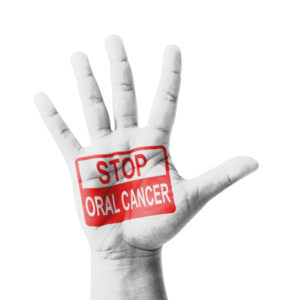Children’s teeth undergo several key phases of development, from the very first tooth eruption to the transition into a full set of permanent teeth. Understanding these stages helps parents and caregivers provide the right support at every milestone. This guide explores how teeth form, what to expect during each phase, and why early dental care is crucial. By learning about these milestones, you can help ensure that your child’s smile remains strong and healthy for years to come.
Why Early Development Matters
Dental development begins before birth. As teeth start forming in the jaw, they set the stage for proper alignment, chewing, and even speech. Proper care in the early stages prevents common issues like cavities, crowding, and gum problems. According to the World Health Organisation, around 60–90% of children worldwide experience dental caries, making early attention to oral health especially important.
Parents play a vital role by instilling healthy habits, scheduling dental check-ups, and staying informed about potential warning signs. When parents understand key developmental milestones, they can spot irregularities and seek timely advice.
Phase 1: Formation of Primary Teeth
Prenatal Formation
Primary teeth, also known as baby teeth, start taking shape when a fetus is just six weeks old. Although they aren’t visible at birth, these teeth lie underneath the gums, waiting for the right time to erupt. Proper maternal nutrition during pregnancy, especially adequate calcium and vitamin D intake, supports healthy tooth development in the womb.
The First Tooth Eruption
Most infants get their first tooth between six and ten months old, typically a lower front incisor. However, it’s not uncommon for a tooth to appear as early as three months or as late as one year. Signs of teething can include irritability, drooling, and a desire to chew on hard objects. Gently massaging the gums or offering a chilled (not frozen) teething ring can help soothe discomfort.
Complete Set of Baby Teeth
By the time children are around two to three years old, they usually have a full set of 20 primary teeth. This set is essential for proper chewing, speaking, and facial muscle development. Caring for these first teeth sets the foundation for healthy permanent teeth. Brushing gently with a child-friendly toothbrush and fluoride toothpaste helps build good habits.

Phase 2: Transition to Permanent Teeth
The Shedding of Baby Teeth
Children typically begin losing their primary teeth around age six. The lower front teeth (incisors) are usually the first to go. The root of each baby tooth dissolves, allowing the tooth to fall out naturally. Some children lose teeth earlier or later than average, but a general rule is that each primary tooth is replaced by its corresponding permanent tooth.
Eruption of Permanent Teeth
After a baby tooth falls out, it can take a few weeks or months for the permanent tooth to emerge. By around age 12 or 13, most children have their permanent teeth in place, except for the wisdom teeth that usually appear in the late teens or early twenties. This process results in a set of 28 permanent teeth before wisdom teeth appear.
Common Alignment Concerns
As permanent teeth come in, parents might notice crowding, overlapping, or gaps. Some alignment issues correct themselves over time, especially if the child’s jaw is still growing. However, persistent crowding or severe misalignment may need an early orthodontic evaluation. Addressing these concerns while a child’s jaw is still flexible can prevent more complicated issues later.
Phase 3: Key Challenges During Development
Early Childhood Caries
One of the most common dental problems in young children is Early Childhood Caries, often caused by prolonged exposure to sugary drinks or foods. Bacteria feed on sugar and produce acids that erode tooth enamel. Teaching children to brush twice a day and avoid frequent snacking on sugary items can significantly lower their risk of cavities.
Teething and Discomfort
Repeated episodes of teething pain can occur as different sets of teeth come in. While baby teeth erupt in infancy, permanent teeth can also cause gum soreness. Encourage children to maintain proper brushing habits during these times, and consult with a Pediatric Dentistry If excessive pain or swelling occurs.
Trauma and Injuries
Active children often bump or chip a tooth while playing. In such cases, immediate attention can prevent further damage or infection. If a tooth is knocked out, placing it in a container of milk and visiting a dental professional quickly can improve the odds of saving the tooth. Regular check-ups help monitor any signs of trauma that could affect developing teeth.
Gum Health
Healthy gums support the teeth and safeguard the roots and jawbone. Children can experience gingivitis if plaque accumulates along the gum line. Simple steps like brushing, flossing, and routine dental cleanings are the best ways to protect gum health. Vigilance during the transition period is important, as new teeth might erupt in hard-to-clean areas.
Supporting Healthy Growth
Balanced Nutrition
A diet high in calcium, phosphate, and vitamins supports strong teeth and bones. Milk, cheese, yogurt, and leafy vegetables are great sources of these nutrients. Limiting sugary snacks and beverages reduces the risk of cavities. Encourage children to drink plenty of water, as this helps rinse away food particles and neutralise acids in the mouth.
Establishing Good Habits
Brushing and flossing are essential for children to learn early. Most dentists recommend starting to clean an infant’s gums before teeth even appear. Use a soft, damp cloth to gently wipe the gums after feeding. Once the first tooth erupts, transition to a small, soft-bristled toothbrush and a smear of fluoride toothpaste. As children get older, flossing every day removes debris between teeth.
Scheduling Regular Check-ups
Professional cleanings and exams allow dental professionals to track each stage of your child’s dental development. Early intervention can address emerging issues like misalignment or tooth decay. These visits often include X-rays to see how the roots and incoming permanent teeth are aligning below the gum line. Check-ups at least twice a year help maintain oral health.
Early Orthodontic Evaluations
Some dental professionals recommend an orthodontic assessment by age seven if there are early signs of misalignment. Detecting jaw growth or spacing problems early can prevent more invasive treatments later. Orthodontic appliances like expanders can guide proper growth, while braces or clear aligners may be introduced in the later years to correct remaining issues.
When to Seek Help
While some aspects of dental development can be managed at home, certain situations require professional attention. If your child has persistent pain, prolonged bleeding, or a tooth that hasn’t emerged long after the primary tooth is lost, consult a dentist. Addressing potential problems quickly can ensure smoother transitions between each stage and help prevent future complications.
Encouraging a Positive Attitude
Children who feel comfortable visiting the dentist are more likely to maintain strong oral health into adulthood. Positive experiences, like choosing a favorite flavored toothpaste or receiving praise after a good check-up, build a healthy mindset.
Show them that brushing can be enjoyable by using fun toothbrush designs or turning it into a short, family activity. As they grow older, explain why dental care matters, so they understand it’s not just a rule but a way to protect their own health.
Conclusion
Children’s dental development is an intricate journey that begins well before birth and continues into adolescence. By understanding each stage from the emergence of the first baby tooth to the final permanent tooth parents can provide the right guidance and address any concerns promptly. Good nutrition, consistent brushing and flossing, and regular dental visits help ensure that young smiles stay bright and healthy.


